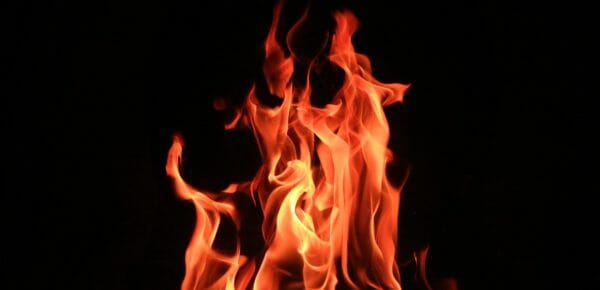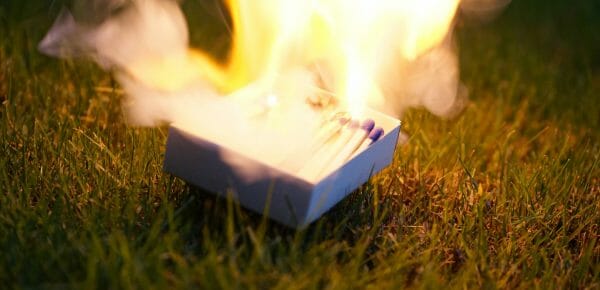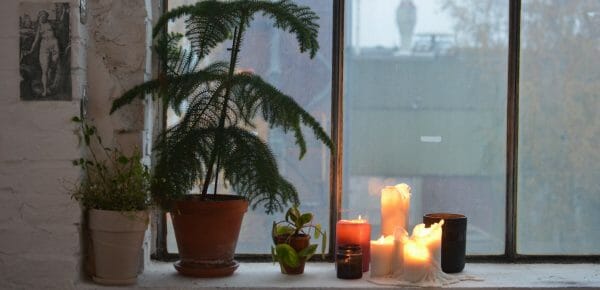Sharing a campfire with family and friends is not only enjoyed in the summer months but well into the autumn season too. There is nothing better than making memories around a cozy campfire on a cool fall evening. But campfires are dangerous as well as enjoyable.
To keep your time around the fire fun instead of harmful, make sure you know:
- Where and how to build your campfire
- What makes the best campfire starter
- How to control your campfire
- How to safely enjoy your campfire
- How to properly put out your campfire
So, before you gather to take the pictures labeled “family around the campfire,” follow these simple campfire safety tips.
Tip #1: Where to Build It
Making a fire at a campsite, in the woods, or in your backyard takes know-how before any match is struck. Before starting your campfire, it’s important to:
- Check the spot
- Check the fire danger rating
- Check the weather
- Check the rules
Check the spot
Knowing what makes a good spot to build a fire is essential. There should be a 10-foot radius around the fire, clear of chairs, tents, food, debris, or other flammable objects. Clear the space and keep it clean.
Look both around and above the area for:
- Trees growing too close to the potential fire
- Branches hanging too close to potential flames or sparks
- Brush or debris on the ground too close to the fire
Check the fire danger rating
Find out the local fire danger rating to see if fires are permitted or what restrictions are in place based on local circumstances. Drier conditions make for more combustible material, such as trees, brush, or fallen branches and leaves. You want to know how dry the area is officially. One rainfall after a long, hot, dry spell does not automatically improve a fire danger rating. Find out before you light your campfire starter.
Check the weather
Weather always plays a part in fire safety. Wind and fire are a dangerous combination. If conditions are too windy, sparks get carried faster and farther, making a fire difficult to contain. Windy conditions combined with dry air can make fire spread more rapidly. It can quickly grow out of control.
Check the rules
If you are building your fire in a campground, make sure you understand the campground fire rules before moving ahead. Following the rules is not only safe, but it’s also courteous to your fellow campers.
Tip #2: How to Build It
Campfire Starter
Kindling, made up of dry sticks, twigs, and small branches, is the best campfire starter. It ignites fast and generates the necessary heat to encourage larger logs to catch fire.
Other helpful campfire starters include dry pine cones or leaves, sawdust or wood chips, or recycled paper.
Nix the Accelerants
Lighter fluid and gasoline, or other fire accelerants are unnecessary. Don’t use them. They often cause more trouble than they solve. If you are new to building campfires, be patient. It usually takes time to get a fire started, but once it heats up, it burns hot. When it comes to campfire safety, accelerants are no match for patience and skill.
Ring of Fire
Use a fire ring whenever possible. Most campgrounds have a designated spot for campfires which include a metal fire ring. Sometimes there is excess waste in the fire ring from previous campers. It is a good idea to reduce waste in the ring before you use it.
If a fire ring is unavailable, dig a hole, clear it of debris, and round it with rocks to create a camping fire pit. You may also want to invest in a portable fire pit camping in the wilderness or making a fire in your backyard.
Stay Modest
Put simply, the larger the fire, the harder it is to control. Fires can get out of control fast, and that means they can get dangerous fast too. Being preoccupied with a large fire on the brink of spreading is no fun, especially with smaller children and pets.
Large fires also burn hotter, making them harder to enjoy. Keep it small, and keep it fun. A more modest fire is better for using a campfire grill, playing camping games, and roasting marshmallows and hotdogs. In other words, most of the activities that make campfires so much fun.
Tip #3: How to Control It
Attend Your Fire
Another important campfire rule is to stay attentive. An unattended fire is a dangerous fire. And again, a modest fire is best when it comes to keeping it contained, but don’t make the mistake that a little fire is fine to walk away from. A little fire unattended can quickly become a large fire out of control. Stay with it and stay safe.
Water, Water, Water
When attending a fire, whether in a campground, in the wilderness, or in your backyard, keeping a water source nearby is necessary. A bucket of water close at hand to douse any escaping embers also douses the potential hazard of a fire getting out of control. Water is essential to any fire emergency kit.
Tip #4: How to Safely Enjoy It
Around the Fire
A blazing campfire is meant to be fun and relaxing, full of friendship and laughter. A few simple behavior rules go a long way to ensure safe enjoyment. These rules are especially important to teach children.
- Stay outside the campfire ring and don’t touch it once the fire is lit. It’s hot. It burns.
- Don’t run, jump, or roughhouse close to the campfire. Tripping, falling, or rolling into a fire causes injury.
- Once something goes into the fire ring or pit, it stays in. Never pull anything out of a fire.
Campfire Cooking
Cooking food over the flames of your campfire can be a lot of fun. A variety of methods can be used to cook a variety of foods. Make sure you have the proper cookware for the cooking method you plan to use, such as:
- Long skewers for roasting hot dogs or marshmallows
- A cast iron skillet for stews or slow-cooked items
- Aluminum foil and long tongs for baking potatoes or apples directly into the coals
- A grill grate for grilling meats or veggies
A few BBQ tips for safe open flame cooking:
- Keep a campfire spray bottle nearby to lessen the flames and better control the heat on your food.
- Prep the food at home in your kitchen with proper tools and store it in food containers for easy use.
- Don’t cook directly over the open flame. It just burns the food. Cooking over hot coals is safer and tastier.
- Don’t fling, flick, or toss hot, burning food. Stay calm if your food catches fire.
- Remember skewers are sharp and hot, as are grates, pans, and tongs. Keep a safe distance around the fire and point cooking utensils away from others.
Tip #5: How to Properly Put It Out
When the fun is done, so is the fire. Put it out before walking away. It only takes one little spark to re-ignite a fire. Don’t leave an opportunity for a live spark to grow into a massive fire.
Steps for Putting Out a Campfire
- Pour water on the burning logs and flames
- Stir the ashes and feel for heat.
- Pour on more water.
- Repeat until you feel no heat, hear no hiss, and see no embers or smoke.
Campfire Fun Vs. Campfire Danger
No one denies the fun to be had around a campfire. Whether roasting marshmallows for s’mores, or singing campfire songs, or sharing campfire stories (especially the ghost kind), or playing fun camping games, great memories happen gathered around a fire with family and friends. But from the moment you ignite the campfire starter, following simple campfire safety tips helps keep the fun going instead of the danger. By practicing campfire safety, you create joyful campfire memories instead of disastrous ones.



